What Are Some Animal Populations That Will Be Harmed By Climate In Change
Climate change has get an everyday term for u.s.a., just have we actually considered what this phenomenon means for animals?
Changes in temperature – and the other impacts of climate change – are becoming more than apparent. We're already seeing the effects of climate change around the globe. These include:
- Some islands , like the Solomon Islands, no longer exist because of rising body of water levels.
- Natural disasters – like floods, hurricanes, fires and tornadoes – are occurring more than oft.
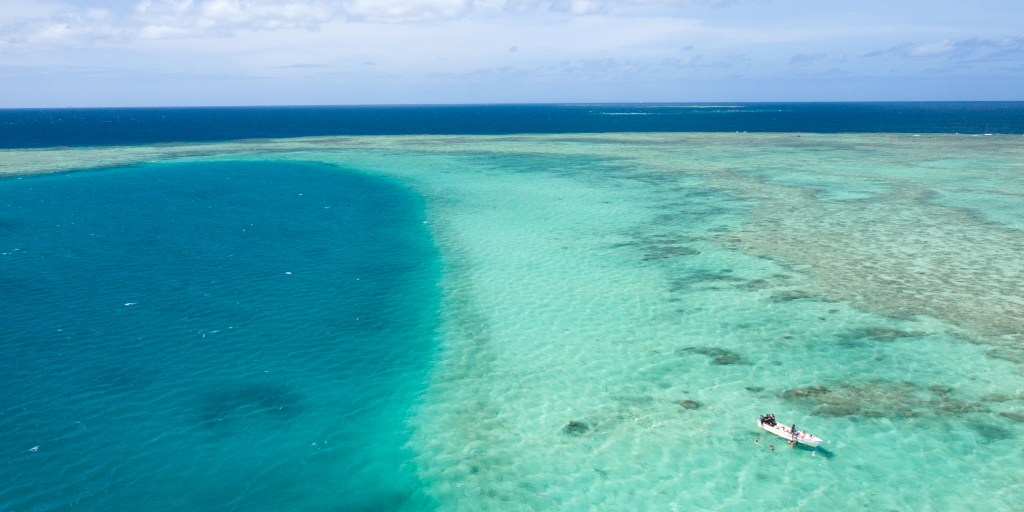
And climate change seriously affects fauna species too:
- More than beast species are becoming extinct due to the furnishings of climatic change on the ecosystems and habitats they live in.
- Animal habitats are becoming less comfortable, sometimes even inhospitable.
- Animals are affected past increases in pollution that affects the food they eat and the habitats they live in.
- Some animals have to modify their breeding and feeding patterns in order to survive the impacts of climate modify.
When animals tin't migrate to areas with more than favourable climates, their chances of extinction increment significantly. Below are 7 fauna species that are affected by climate change today.
1) Cheetahs
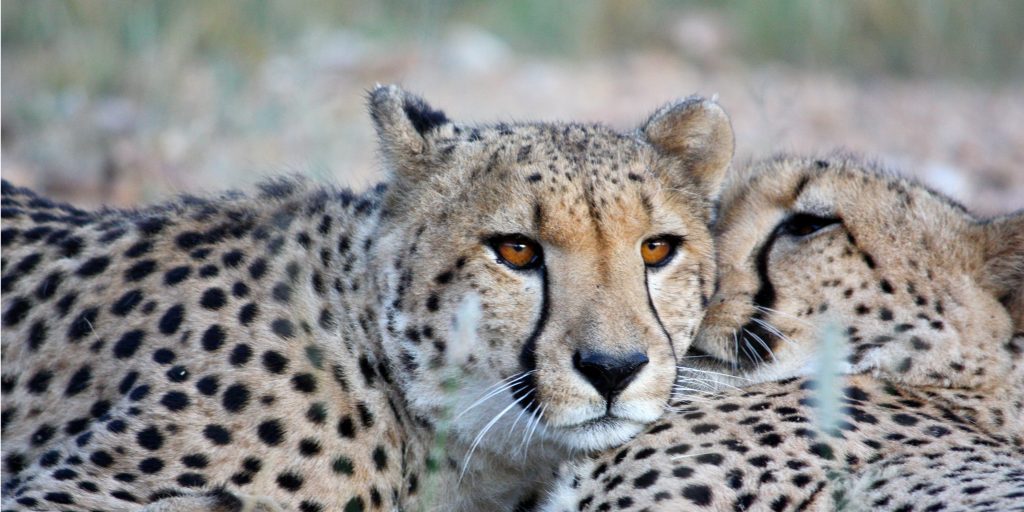
The cheetah is currently listed as vulnerable on the International Union for Conservation of Nature'due south (IUCN's) Red List of Threatened Species.
Chetah population numbers are declining dramatically in the confront of climate change. And in some areas, cheetahs' prey populations are declining, too. Every bit a issue, cheetahs have had to change their diets and prey on other animals that live in the same surroundings. Often, these animals don't take the aforementioned nutritional value as cheetahs' usual prey – affecting its ability to produce healthy sperm .
In fact, cheetahs sperm counts are ten times lower than your boilerplate house cat. And this is due to higher temperatures acquired by global warming, which take led to the development of abnormal coils in cheetahs' sperm.
And, ascent temperatures likewise affect the large true cat'southward power to reproduce by causing lowered testosterone levels in male cheetahs.
Considering the number of cheetahs in the wild is failing steadily, conservationists are calling on the global community to lend support. One of the best ways to assist is learning about cheetahs and adding to conservation efforts. For example, you lot tin join GVI volunteers and gather data in Karongwe Private Game Reserve on projects that contribute towards cheetah conservation.
2) Behemothic panda bears
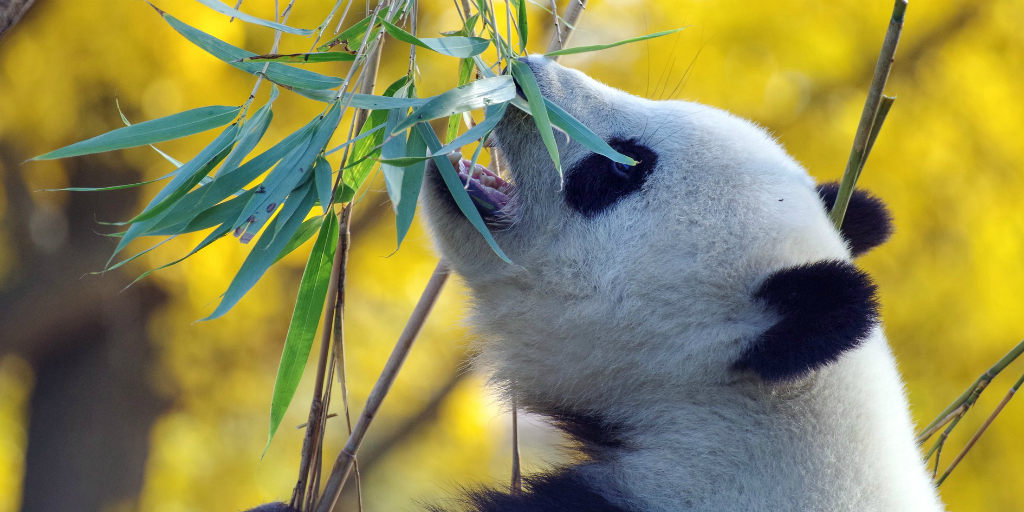
Original photo: "Panda bear mammal" by wal_172619 is licensed under CC BY-SA 2.0
This two-toned tree enthusiast, and World Wide Fund for Nature (WWF) trademark bear, feeds exclusively on bamboo.
Just, climate change is reducing the amount of bamboo that grows in pandas' natural habitats in China.
Autonomously from existence the bears' staple diet, bamboo also provides them with shelter from the elements, leaving pandas vulnerable on every front end.
3) Green turtles
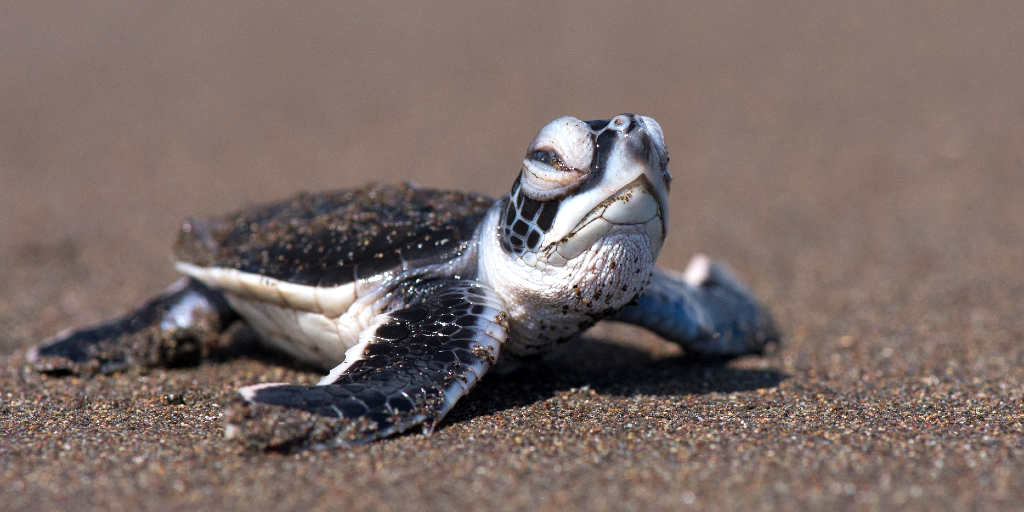
Green turtles, like many animal species, are sensitive to the changes in temperature caused by global warming.
And, because a infant turtle'due south sex depends on the temperature of the sand where their egg is laid, climate change has an bear on on turtles' evolution, too.
The warmer areas produce female turtles. So, with climatic change causing an increase in temperatures, more females than males are hatching. And this reduces the number of male person light-green turtles effectually.
This may touch on the population growth of green turtles in the future since it ways fewer mating partners for female turtles.
You can support the conservation of this endangered species past joining GVI'southward Endangered Turtle Conservation and Research program in Greece.
Or, you can travel to Republic of seychelles and add to the conservation of hawksbill and greenish sea turtles.
4) Asian elephants
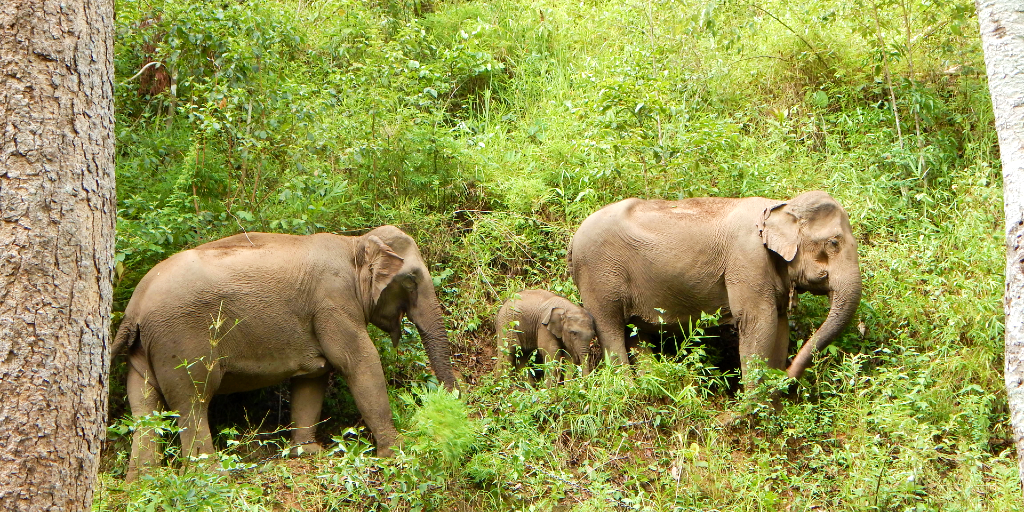
Elephants are particularly affected by high temperatures. This is because they demand to potable a lot of fresh water to survive. So, climate modify and global warming – which can cause droughts and h2o shortages – make it more than difficult for elephants to get all the water they need every solar day.
Warmer weather condition also brand it easier for invasive plants to thrive, and outgrow the elephants' regular food sources like bamboo leaves and bananas.
You can bring together GVI and build on efforts aimed at safeguarding Asian elephants while volunteering in Thailand.
5) Polar bears
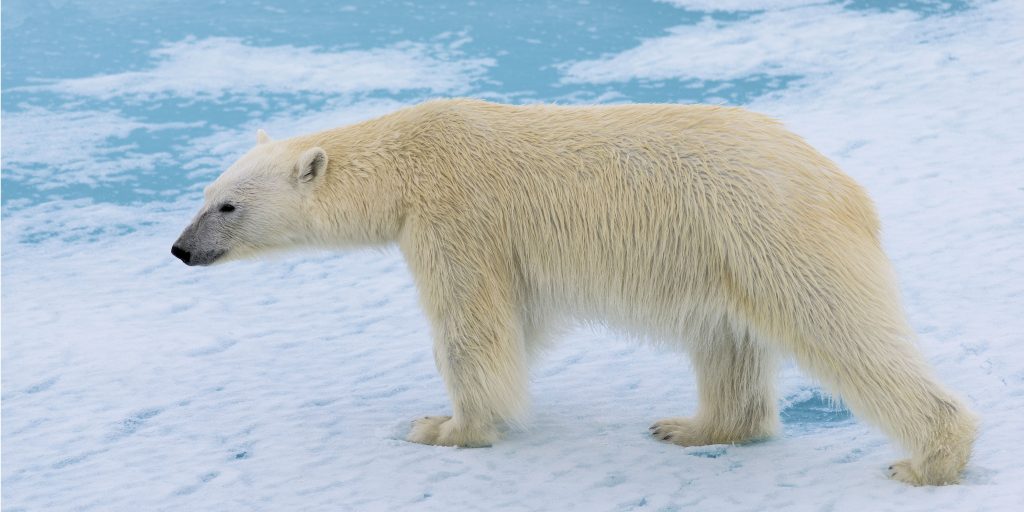
Original photograph: "Polar Bears on Thin Ice" by Christopher Michel is licensed under CC By 2.0
Climatic change and global warming are reducing the amount of Arctic sea ice. This water ice is important because it's what polar bears live on and where they chase for seals.
And then, as more than ice melts, polar bears accept less access to food, and their habitats are becoming smaller.

Original photo: By David Waite is licensed under Unsplash
6) Jaguars
While studies take shown that jaguars are fairly resilient to farthermost drought and overflowing over the short term, the jaguar population will crash if there are a number of farthermost droughts or floods in a brusque time period, which is extremely likely due to climate change.
In add-on, jaguars are already under pressure level from hunting both of themselves and of their casualty also every bit habitat loss through deforestation, which is a central concern in Central and Latin America where these cats live.
If you want to get involved in monitoring this cute species' activities and helping to preserve their habitat, you can join GVI in Costa Rica .
6) Adélie penguins

Original photo: "Antartica" by nomis-simon is licensed under CC BY 2.0
These birds live on the Antarctic continent and feed on krill – shrimp-like creatures that live under the ice sheets.
Climate change is causing the ice in this area to melt. And, equally the ice melts, krill populations decrease and the penguins have to migrate from their natural habitat to notice alternative food sources.
This makes it harder for them to settle down and mate during the breeding flavor because they sometimes run short of food.
How to brand an impact on climatic change and wildlife conservation
Climatic change is jeopardising the survival of many animate being species. In some cases, it'south pushed them up the endangered creature species list.
Only it's not all doom and gloom.
Creature conservation efforts are upwardly and running all over the world, and they're calculation to the global movement towards reducing the impact of climatic change.
We tin can all play our office in curbing the furnishings of climate change by contributing to conservation efforts.
These may include creating more awareness about conservation, getting involved in conservation research, or participating in wildlife conservation projects on the ground.
GVI offers a host of programs where you could contribute towards the conservation of endangered species and the environments they live in. Take a look at GVI's wide diversity of wildlife and marine conservation projects aimed at reducing the number of animals affected by climatic change.
We understand that you may have questions about how COVID-19 will affect your travel plans. Visit our FAQs page which explains our latest safe protocols in response to COVID-19.
Source: https://www.gvi.co.uk/blog/6-animal-species-and-how-they-are-affected-by-climate-change/
Posted by: ortizfoophy.blogspot.com

0 Response to "What Are Some Animal Populations That Will Be Harmed By Climate In Change"
Post a Comment